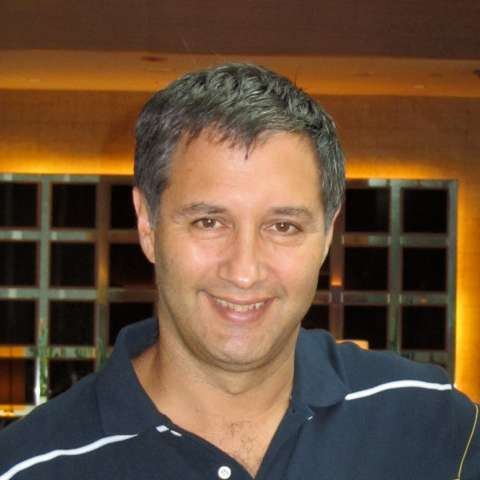Friday's Late Night Prom was a bold venture into crossover. On the left and centre of the stage was a fully loaded symphony orchestra (the Britten Sinfonia); on the right, a jazz big band (the Guy Barker Jazz Orchestra); in front of them, virtuoso jazz guitarist Martin Taylor and his Spirit of Django ensemble; on the podium, conducting the whole lot, was Barker himself. The music was a six movement suite composed by Barker on the basis of tunes and material from Taylor, all of it inspired by Django Reinhardt, one of the late greats of jazz guitar (and a counter-example to the gibe that "there are no famous Belgians").
Barker's intent, we were told, was to produce a piece "reeking of nostalgia". His orchestral writing certainly fulfilled that promise, harking back to French film scores of the 1930s and 40s with swelling string sound, played beautifully by the Britten Sinfonia with real feel for the genre. Barker's writing for his big band was less nostalgic and packed a lot more punch: when the band hit its stride, you had to sit up and listen. Taylor navigated the Django-like quicksilver guitar runs with aplomb, with the gypsy feel imparted pleasantly by accordion and a second guitar in his ensemble.
But you can't judge a cake by its ingredients: while each of these three forces was excellent in its own way, I was thoroughly disappointed by the completed whole. The big band and orchestral sounds never really blended, and neither combined particularly well with the Django-esque guitar parts: it was more like a baton-passing relay race than a team effort.
From the point of view of fans of each of the styles in turn, the whole thing was faintly unsatisfactory. A lover of big band would have wanted more opportunities to hear them really let rip (they were fantastic when they did) and would have wanted soloists standing up for their solos and taking a bow at the end. If you start from a classical point of view, each of the movements was strangely formless - pleasant sounds which didn't travel in any particular direction. Django lovers would have found the whole vibe strange: what made Django exciting was his phrasing and rhythmic variation, with the exceptional ability to pull the rhythm around to suit his mood, sometimes injecting nostalgia, sometimes leaving the other musicians struggling to keep up. Taylor is perfectly capable of doing this playing on his own or with a small ensemble, but you simply can't play that way with seventy or eighty musicians on the stage.
The most successful aspect of the evening was the film music one: the nostalgic string sound was interspersed with bursts of action, most amusingly in Monsieur Jacques, a tribute to an eccentric neighbour of Taylor's in France who was continually falling off his unicycle and seemed to have walked straight out of a Jacques Tati movie: the Britten Sinfonia's percussion section were on particularly fine form depicting his thrills and spills.
Everyone concerned produced some fine playing, and the evening had many musical moments that were thoroughly enjoyable. But however laudable the effort at merging gypsy, big band and classical forces, I came out feeling that I would have preferred to see any of these three ensembles without the other two.


